Our house on the hill overlooking Stoupa is off a narrow, steep concrete road surrounded by neglected, overgrown olive trees. It was a challenge to reverse the van through the wrought iron gate but after a week I’m able to do it with ease.
It’s a contemporary stone clad house built in a traditional Greek style with three verandas. To the east it overlooks olive groves rising to pine trees guarded by slim pointed cypress trees growing on the foothills of the great grey flanks of the Taygetos mountain range. To the west, the sparkling coves and headlands of the Gulf of Messina. It’s set in a garden stocked with bougainvillea, orange, lemon and olive trees, and lots of succulent pot plants. The place is delightful.
We are in the Mani. To see why we’re here and no longer in the van click here
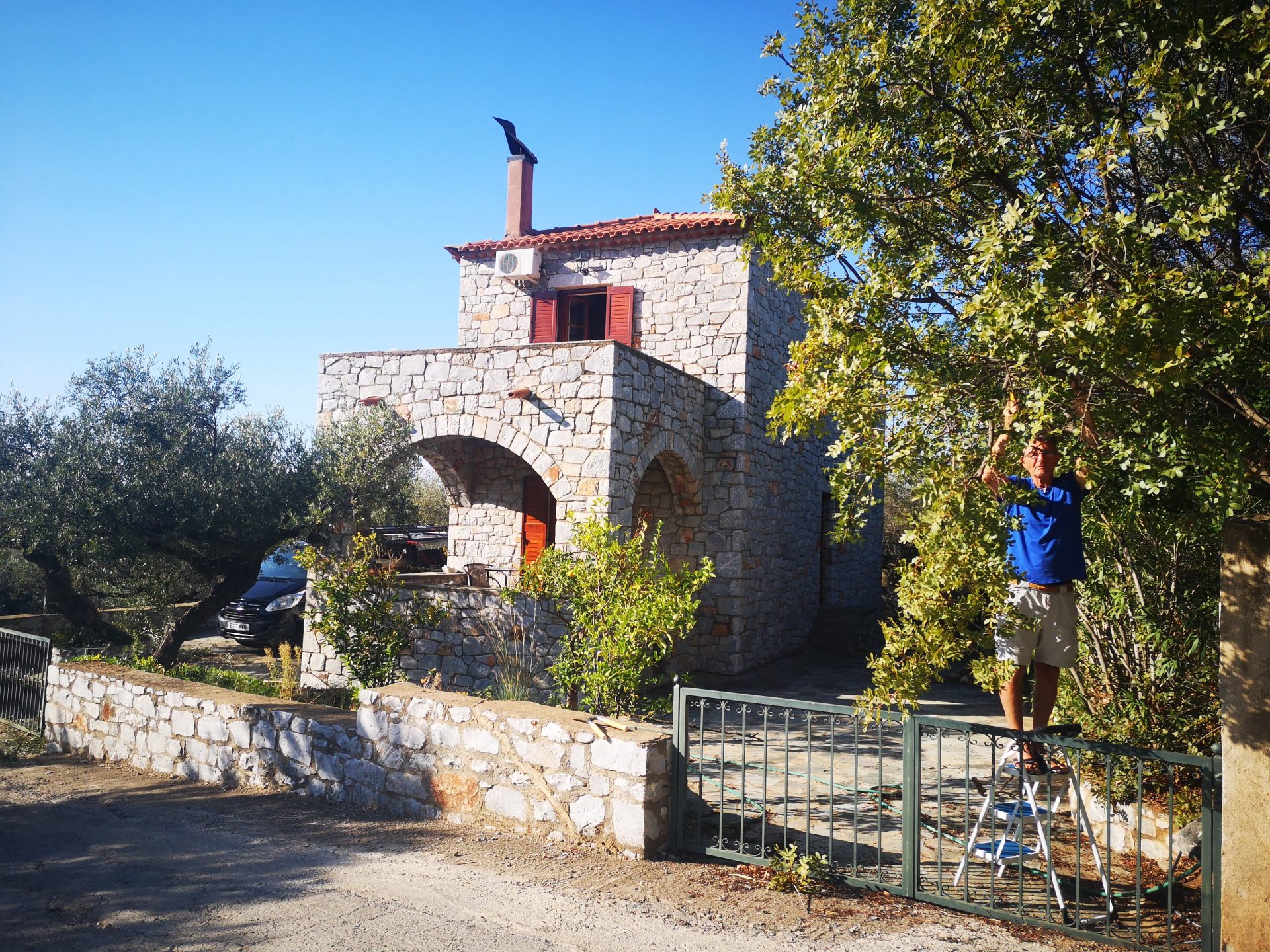
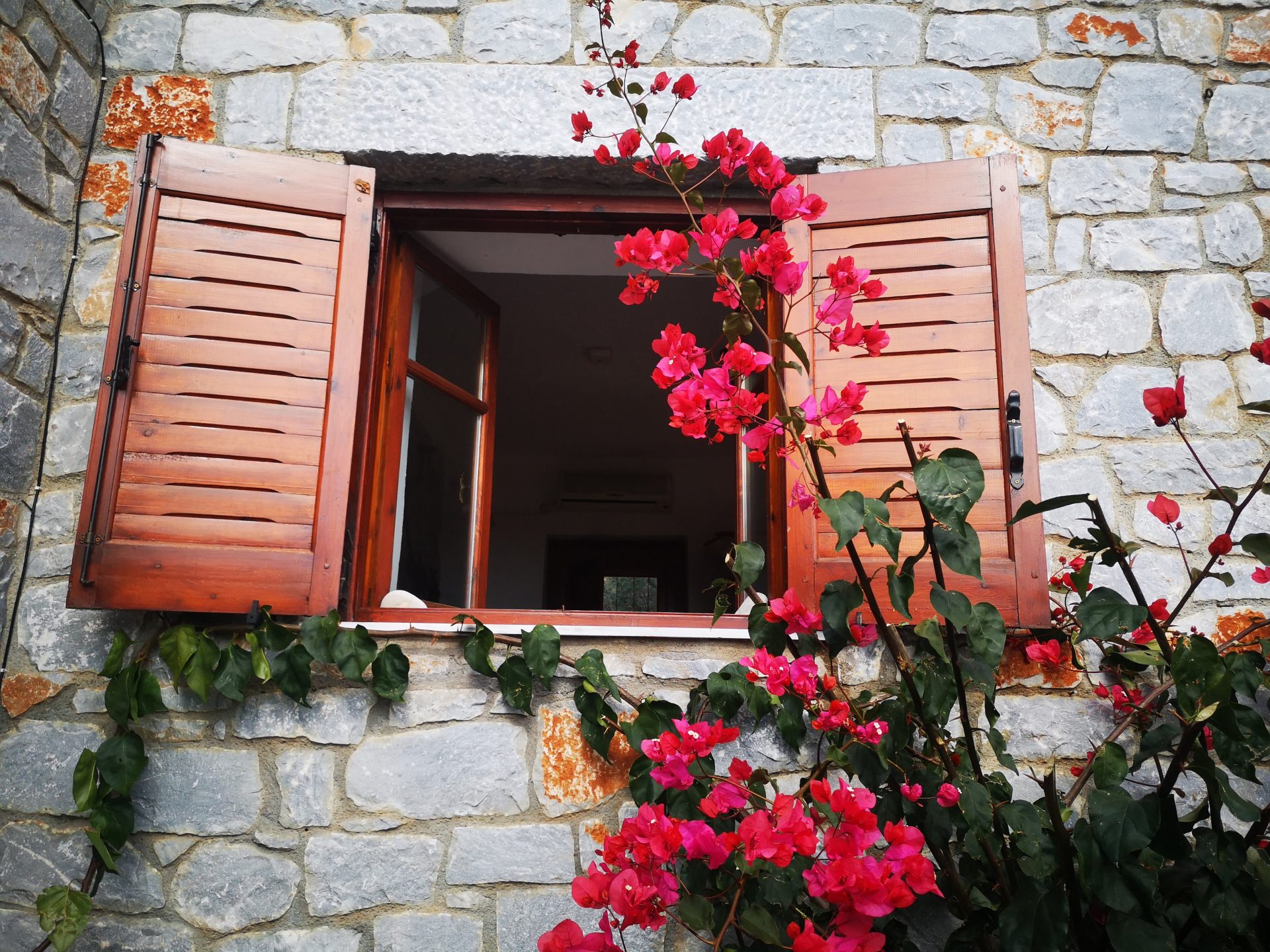
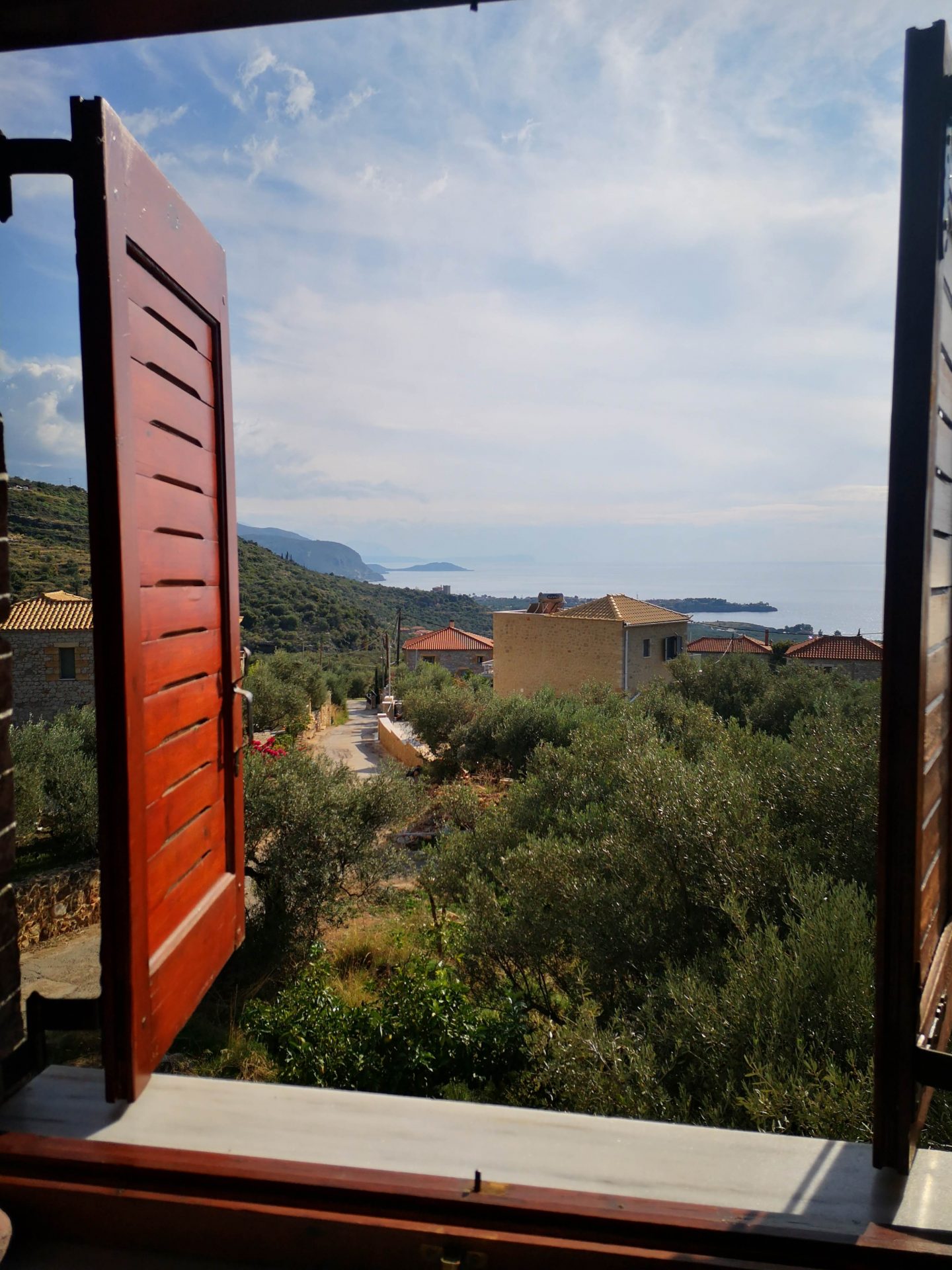
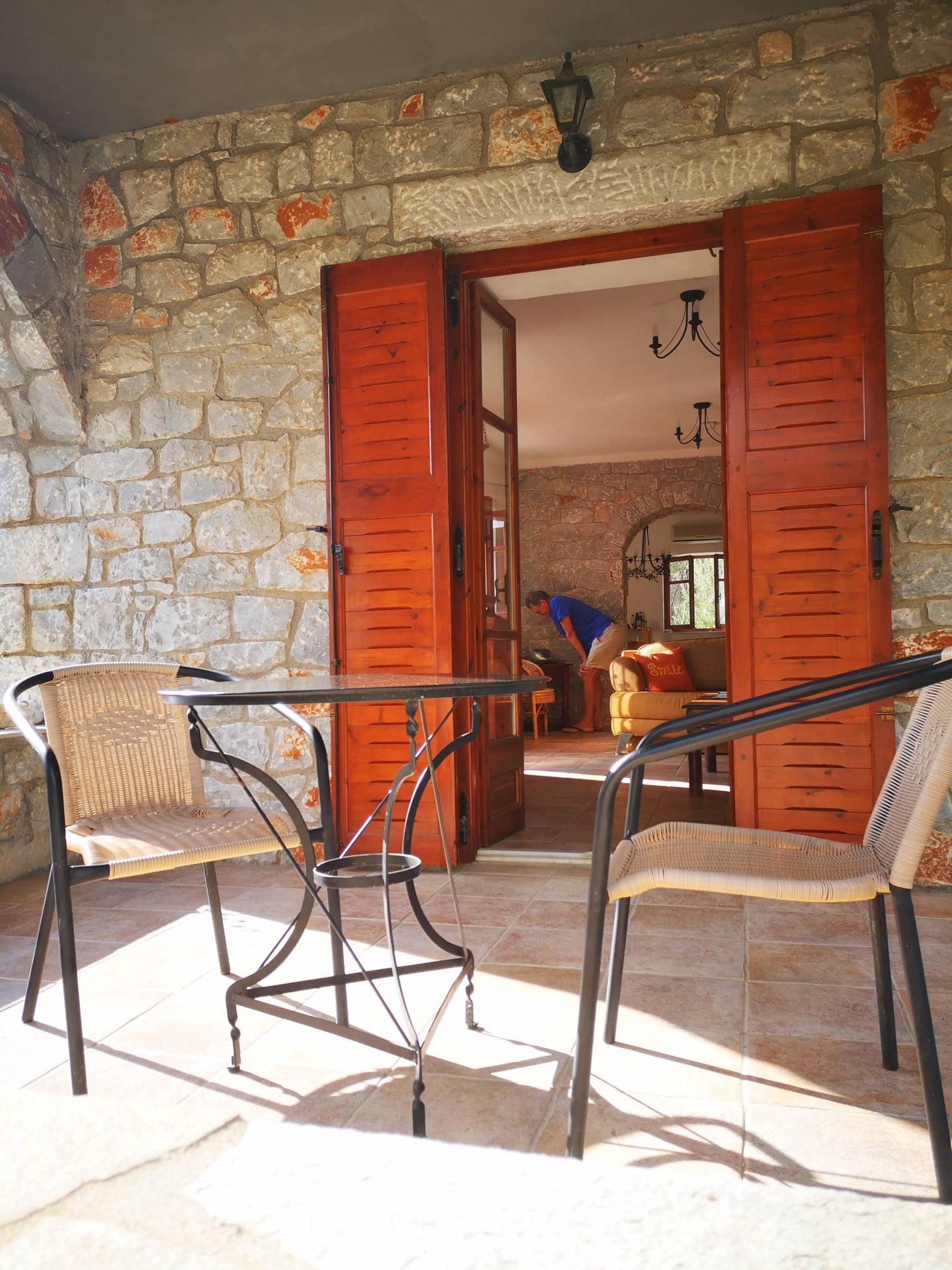
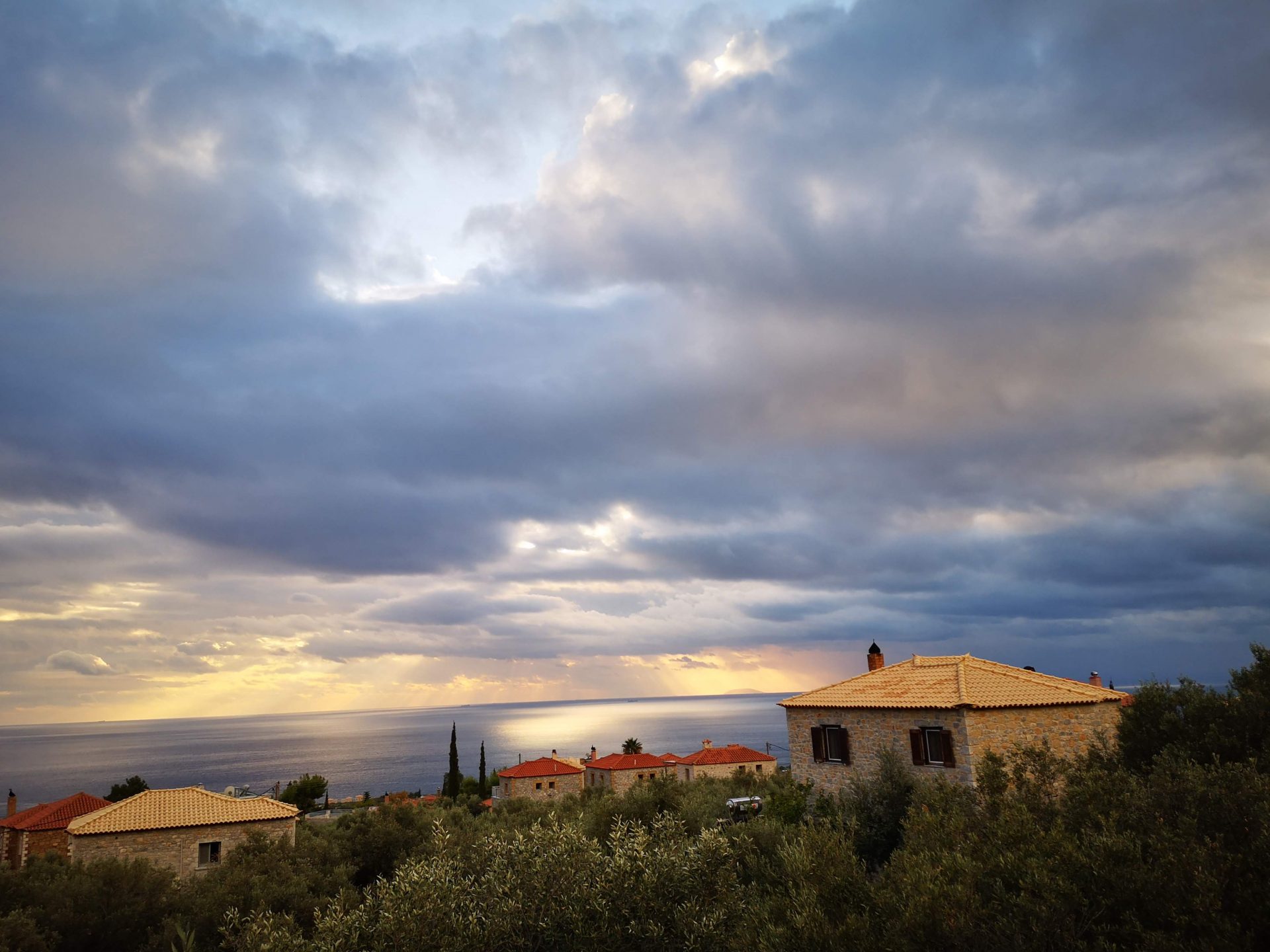
At first it feels strange not to be in the confines of the van but I quickly adjust to the comforts of home. Jo says she would definitely rather be snug in the vehicle, on the road, free to roam and spend most of her time outside. I reckon I’ll feel like that too, but only when it’s a bit warmer.
Like everywhere else, the pandemic lockdown in Greece is strange, but it has its own characteristics. You’re not permitted to travel outside your region. We are in the region of Messinia, which covers quite a large area of the south west Peloponnese. Some people interpret “the region” as the much smaller Mani. Others say you can travel to Kalamata, outside the Mani. It’s slightly confusing. You can leave home for six different reasons – we use two of them – shopping and exercise. You must have a piece of paper on which are written your personal details and the reason for your excursion. We always have this and nobody has ever asked to see it. Non essential shops are supposed to be closed but there’s often a side window through which to conduct a discrete transaction. There’s a nighttime curfew which boy racers ignore on the weekends. We see the occasional police vehicle. Enforcement of the rules is erratic and casual perhaps because there have been very few Coronavirus infections in the southern Peloponnese. And a winter lockdown in Greece feels so different from a winter lockdown in the UK – warm sunshine, swimming, walking, cycling. Like the UK, there may also be a lot of mindless politicking going on, but thankfully, it’s all Greek to me.
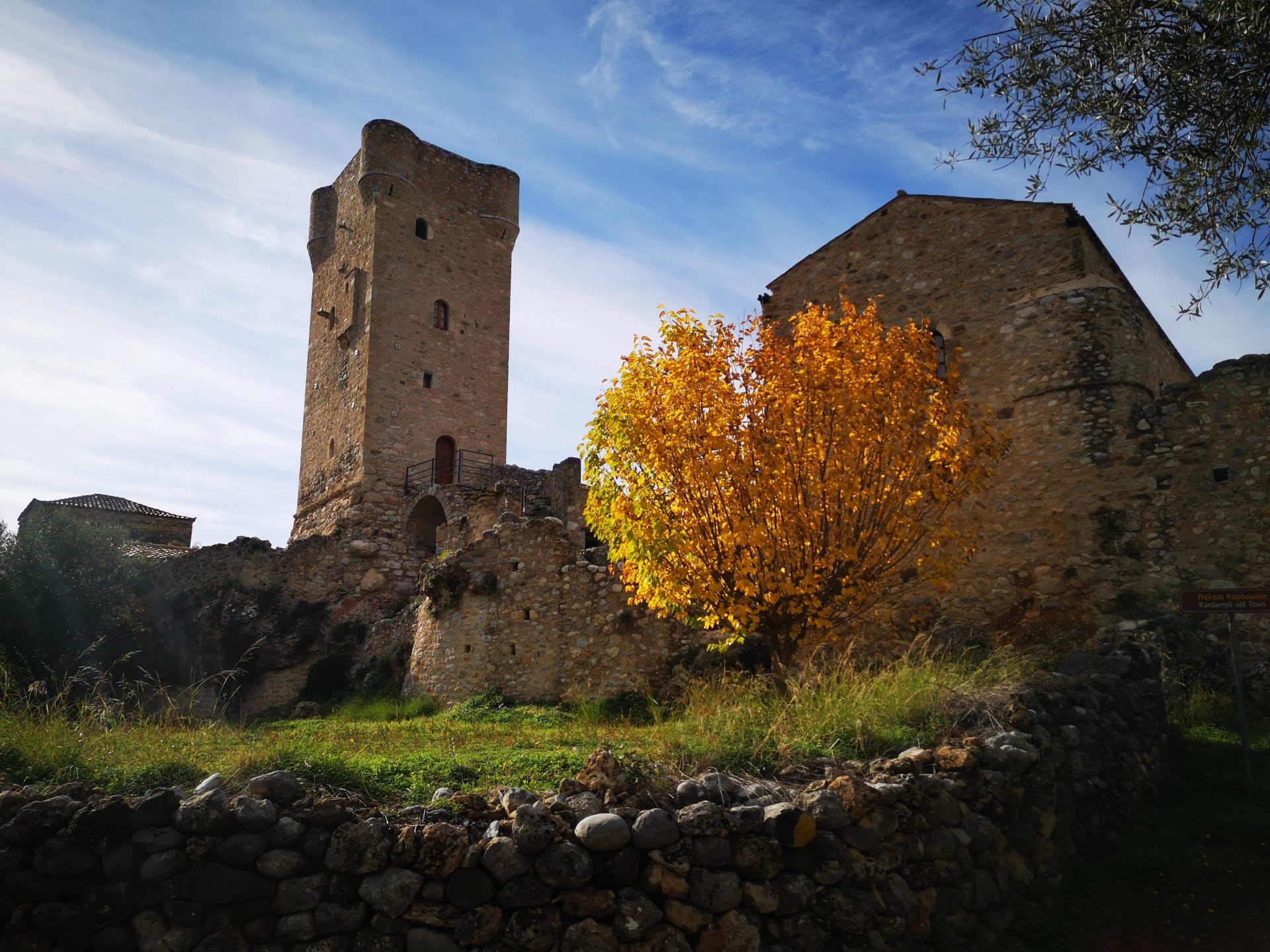
The Mani Peninsula (the ‘middle finger’ of the southern Peloponnese) is a mountainous extension of the Taygetos range with peaks over a 1,000 metres. Little known and rarely visited, it’s a wild and rugged area of woodland, high cliffs and rocky scrub. “If only we could find a merchant who bought stones” said a Maniot, “we’d all be millionaires”.
A feature of the Mani landscape are the tall stone towers which, together with the Byzantine churches, dominate the villages of the region. Historically, every person of power and every head of a family of any influence had a tower built as a means of defence – often against his fellow Maniots. Justice and the acquisition of land, in a region of scarce resources, and the holding of it was achieved by means of formal feuds and the inevitable revenge and murder associated with them.
Sometimes these vendettas would go on for years, even spanning generations, with truces called, so that the harvest could be gathered or to prevent the virtual extinction of families. It must have been a nasty and bloody business and recalls to me the clan animosity of the Scottish Campbells and McDonalds. Today the restored stone towers are splendid buildings that give the countryside a very distinctive outlook.
Using an excellent Anavasi Hiking Trail map that we found in the house, we plan a seven mile walk into the hills along an old mule track to Kastania via the village of Neochori. Neochori’s streets are too narrow for vehicles. It’s winter and there’s a lockdown so there’s not a living soul to be seen which, together with the empty and sometimes derelict cottages, imparts an apocalyptic, abandoned feel. There are a couple of small towers here and tremendous views of the coast.
The Mani mule tracks are constructed from the plentiful grey white rocks that litter the landscape. Some are very elaborate constructions raised a couple of metres above the ground. This one degenerates into a steep narrow boulder strewn path choked by vicious thorny shrubs. My shins are a scratched bloody mess. Kastania is at an altitude of 500 metres. It’s cooler up here, significantly so in the shade. A big tower house dominates the village and there’s a pretty square with a taverna, sadly closed.
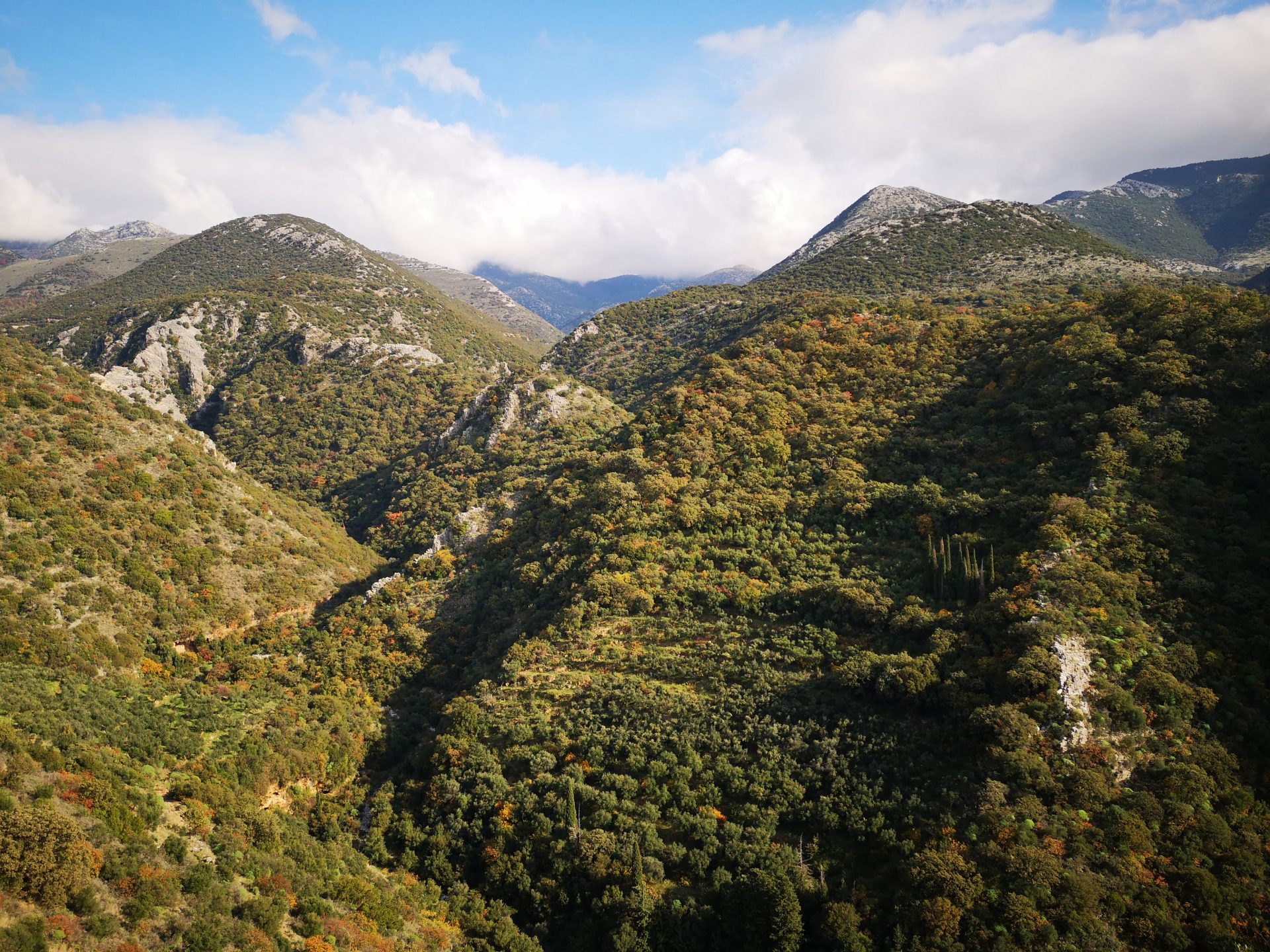
A few days later we cycle from the house, down the hill to the coast in Stoupa. The downhill ride is a fast five minute breeze but somewhat tougher on the uphill return. Just to the south of Stoupa is a 3km cycle path that hugs the rocky coastline to Agios Nikolaos. There, on a headland is a steep track down to a concrete platform with stainless steel ladders leading into the deep clear sea. There are a couple of people swimming here. I dive in from the rocks. Jo follows me in using one of the ladders. She returns after only a couple of minutes, looking very unhappy. She’s been stung by a jellyfish. She shows me the long red sting on her upper arm. It’s incredible, I say. This jellyfish ignored several bathers but as soon as you hit the water it went into action. It’s quite possible that this creature has never stung a human being in its life. Has it been waiting for her for years? Something to do with her pheromones I think.
Agios Nikolaos has a small harbour, a supermarket, a pharmacy (why are there so many pharmacies in Greece?), a butcher from whom we buy a couple of splendid homemade herb infused burgers, and several tavernas, where, despite the lockdown rules there are small groups of men sitting in the sunshine, smoking and drinking coffee.
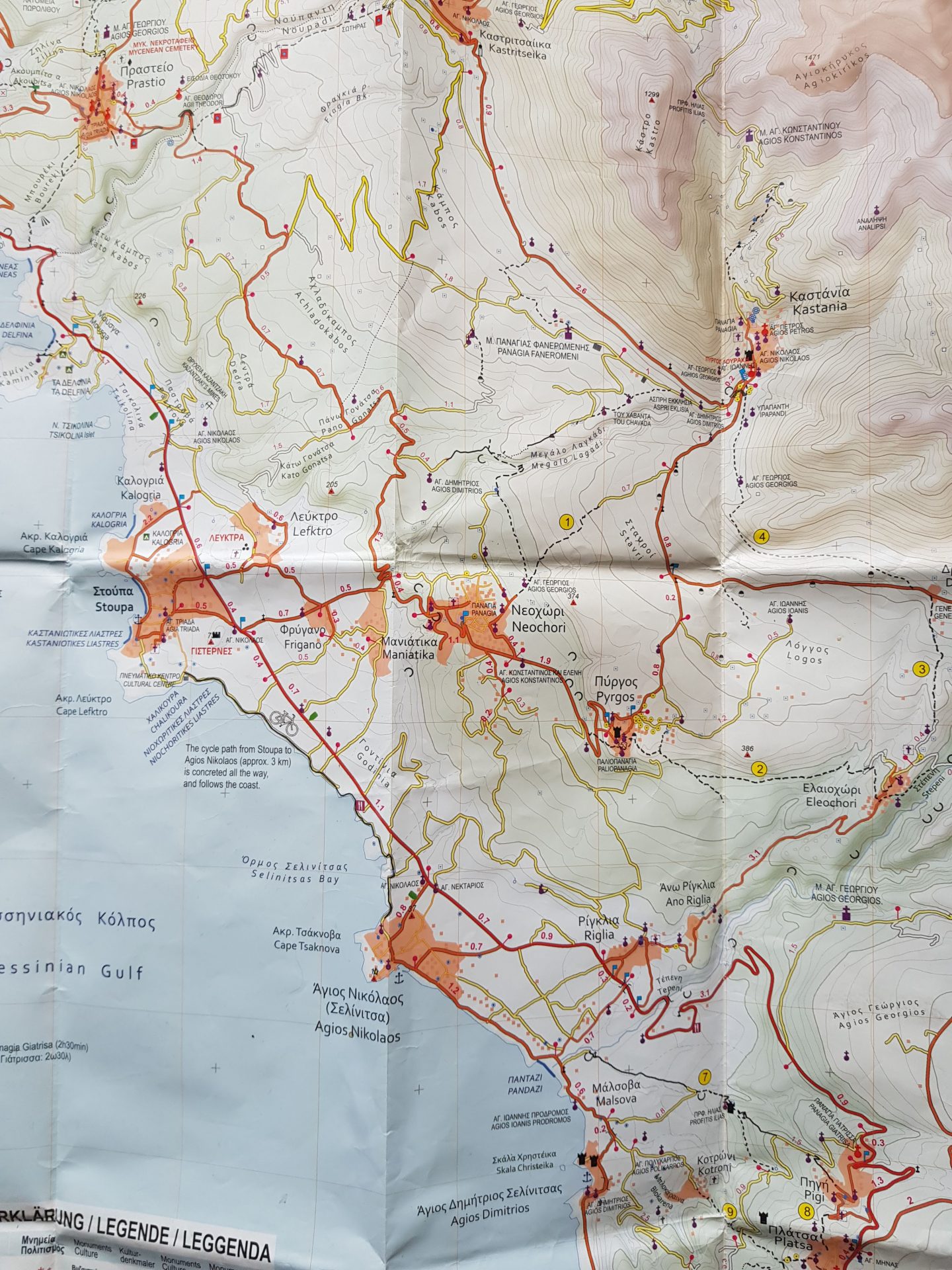
There’s a big open fireplace in the house. Every evening, after watching the sun set below the sea, we light a fire. The big hearth burns wood like a small power station so I’m always on the lookout for logs. In early December we had a week of enormous thunderstorms accompanied by lashing rain and howling winds. The tempest washed a huge array of logs and branches down a narrow river into the sea at Agios Nikolaos. This flotsam was all subsequently washed up onto the beach. Every day for a week we drive down to Pandazi beach to beachcomb for wood along the high tide waterline. We now have a tremendous pile of driftwood, clean sawlogs, twisted branches, or stumps with the root ball still attached. Some of these pieces are quite beautifully weathered, gnarled swirls of smooth wood – too good to burn says Jo.
Jo loves a goal; a practical and often physical objective. She decided at the end of November that we would swim in the sea every day in December. Few people seem to do this in Greece during winter. I think the locals consider us a touch eccentric. The Messinian Gulf is not cold in December but it is bracing. There are five possible locations, nearby along the coast, where we can swim. For obvious reasons Jo’s not keen on what she now refers to as the jellyfish pool.
There are two sandy beaches in Stoupa. Just to the north of the village is the small semi-circular Kalogria beach, fringed by tiny rustic whitewashed cottages (one of which Jo covets) and a couple of tavernas. The water here is shallow for some distance, so it’s safe even when the surf is up after a storm. But natural springs feed ice cold water, direct from the mountains, into the sea so it’s, how shall we say, invigorating! At one side of the beach, hidden amongst the rocks is a small monument to the Greek author, Nikos Kazantzakis. In 1917, the little known author, Kazantzakis, arrived from Crete to mine lignite from the hills behind the town. He recruited the engineer Giorgios Zorbas to assist him and it is Zorbas upon which the protagonist of the great classic Greek novel Zorba The Greek is based.
From Kalogria beach, the road loops down for a short distance to the main sandy Stoupa village beach where again cold springs bubble away, but further out to sea. There’s a remote beach beyond Agios Nikolaos where we beachcomb for wood and lastly the quiet, pebble Ritza beach in Kardamyli. We almost always succeed in swimming in the sunshine although on a couple of occasions it was a swift dip. The best approach to winter Mediterranean sea swimming is to get immersed quickly and swim fast for a few minutes, through the breakers, to get the blood flowing and the temperature regulated. Then it’s a pleasure and afterwards we feel so energized.
On a fine bright morning we set out for a walk that inadvertently evolves into a half marathon, thirteen and a half miles in the hills. God knows how this happens. Using a decent map we estimate the distance to be about eight or nine miles. We often underestimate but seldom to this extent. Unhelpfully, we blame each other! We head inland and uphill to Neochori and then the smaller desolate hamlet of Pyrgos beyond which is another one of those formidable raised mule tracks to Eleochori which is choked with thorn bushes and very hard going – we cover the distance of a kilometre in about an hour. We enjoy a deserved rest in the midday sun, on a stone bench next to the church in Eleochori, over a lunch of boiled eggs, beer and a couple of oranges plucked on the way.
A couple of days later and we’re in the old village of Kardamyli – the inhabitants of which are understandably conscious of its antiquity: two thousand years ago it was the port for the ancient Greek city state of Sparta. Kardamyli is charming with some very handsome houses and plenty of tavernas and restaurants, even a boutique and a shop selling maps and books. The English travel writer, Patrick Leigh Fermor built a fine house here, just outside the village, overlooking the bay. I’ve read many of his travelogues and I’m now thoroughly enjoying Artemis Cooper’s learned and candid biography: Patrick Leigh Fermoy; An Adventure. Patrick described the approach to his Kardamyli plot as “walking down into a gently sloping world of the utmost magical beauty…..The view is an enormous sweep of sea, bounded by the headlands…..The sun is visible until it’s last gasp “. You can rent the house for about €1,000 a night! Behind the village is a well restored 17th Century fortified “clan” stronghold with a courtyard, a church and a number of towers. There’s another literary connection just inland from Kardamyli. The English travel writer Bruce Chatwin, who spent some time in the Mani, requested his ashes to be scattered, upon his death in 1989, around the chapel in the village of Exohorio.
We spend Christmas Eve afternoon; a balmy, brilliant cloudless day, on the beach sunbathing and swimming. I’ve cooked a classic Greek beef stifado stew for Christmas dinner. The superb beef comes from the local butcher in Kardamyli, sourced from local cattle, and unlike most food in Greece it’s not expensive. On Christmas day we invite young Rhiannon to join us with her Croatian rescue dog. She is a fellow campervanner who’s experiencing some potentially expensive mechanical problems with her old Fiat campervan. We’ll help her forget her problems for the day.
By 26th December we have swum in the sea every day of the month. But today is the 27th and Jo’s in a right state. There was a terrific storm overnight and the waves hitting the beaches are huge. We tour the coast in the late afternoon, into the dusk, looking for a sheltered beach from which to swim but it’s hopeless – cold and uncomfortable at best, downright dangerous at worst. We will be unable to swim today and Jo is miserable. For a while she cannot be consoled. But I tell her it’s a measure of the challenge that it cannot be accomplished every day. We’ll try to swim every day in January.
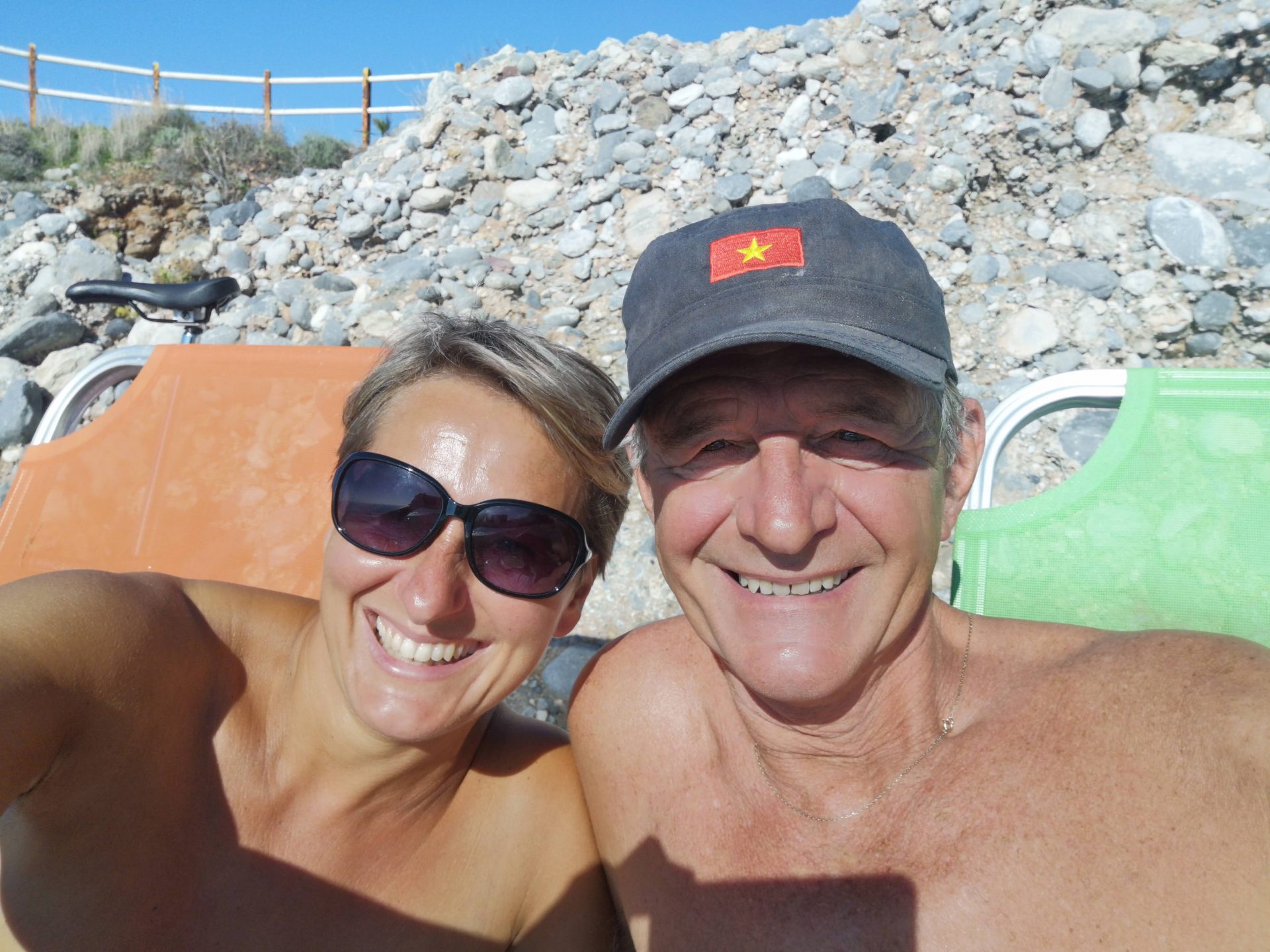
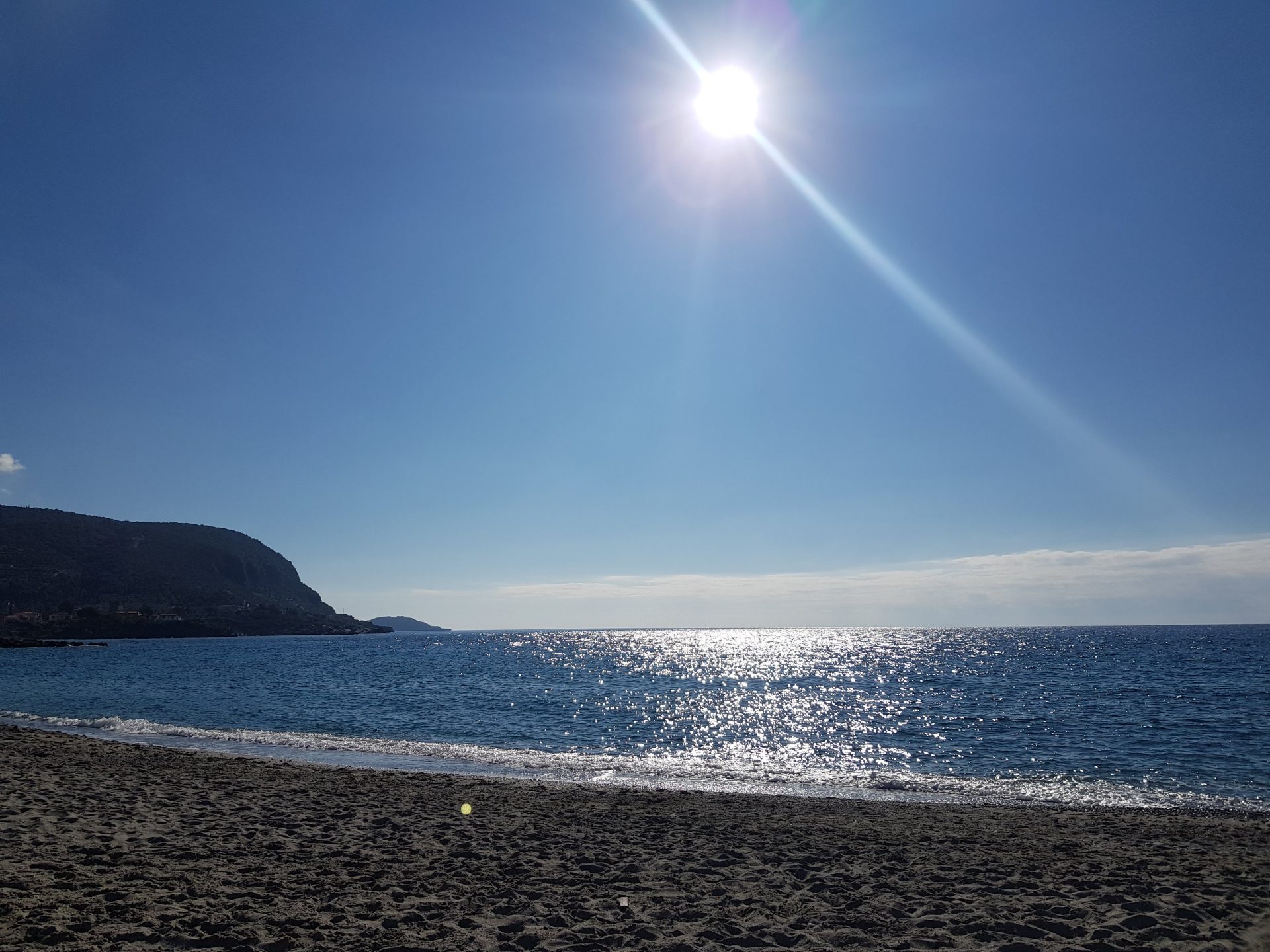
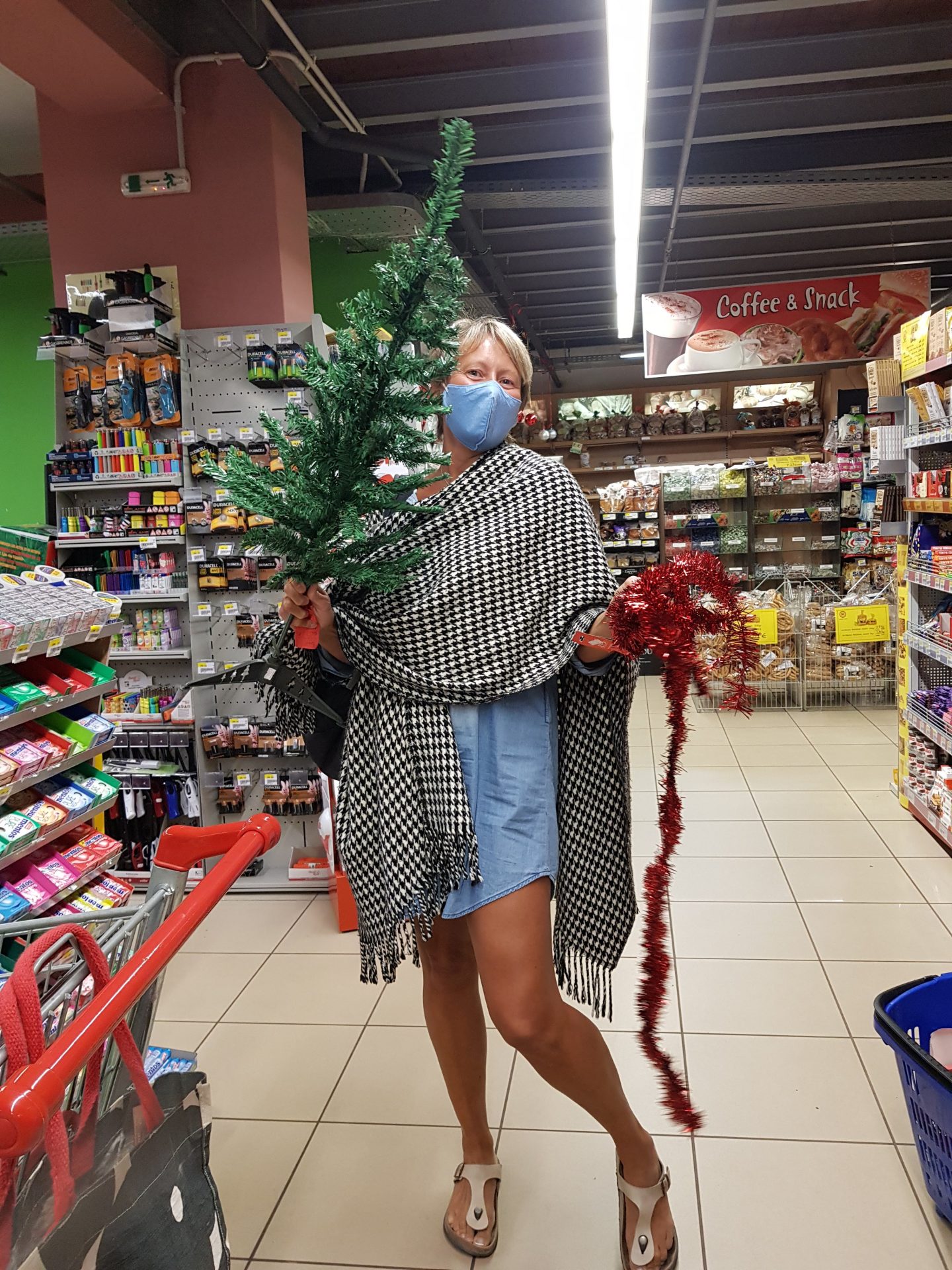
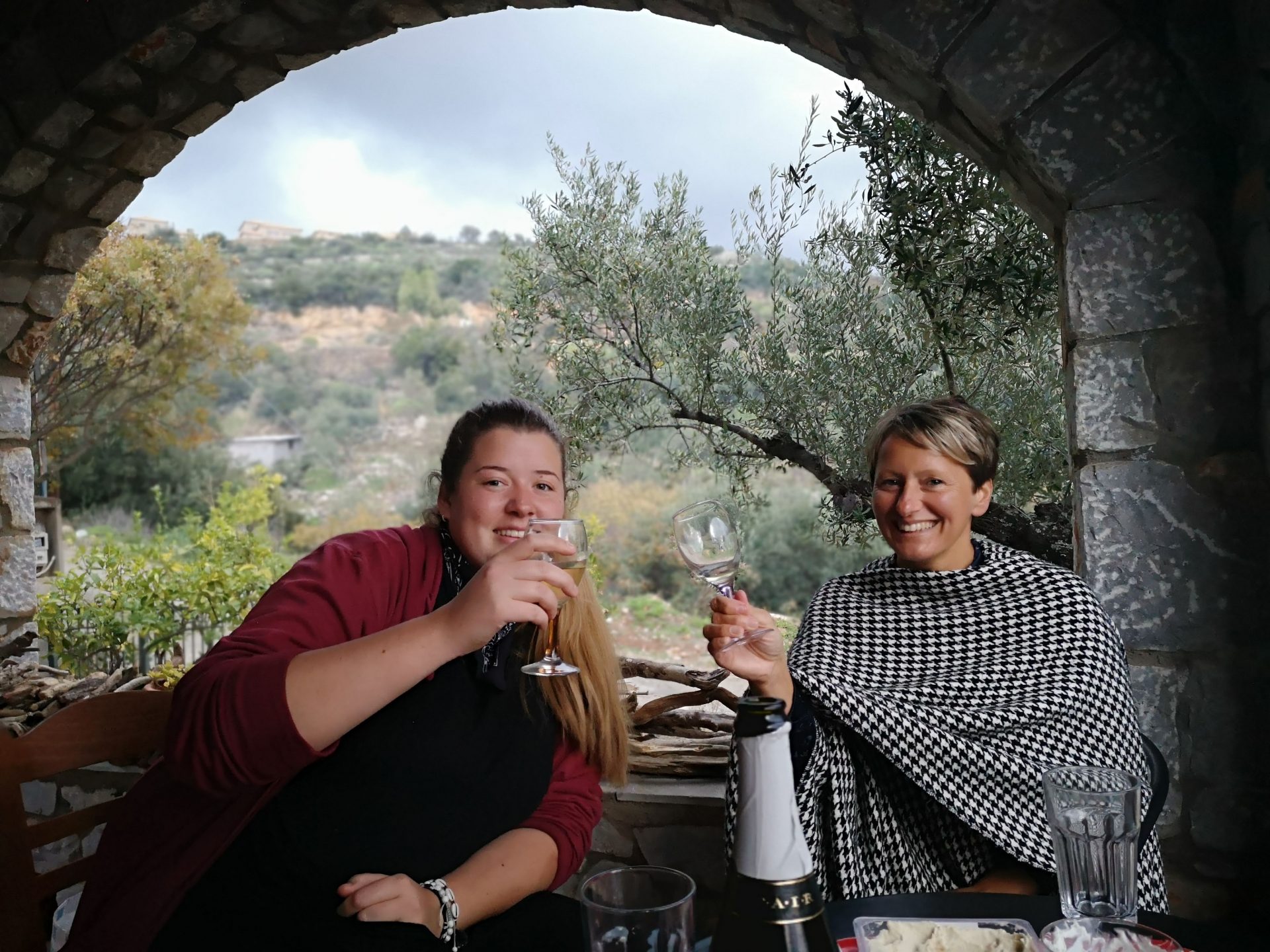
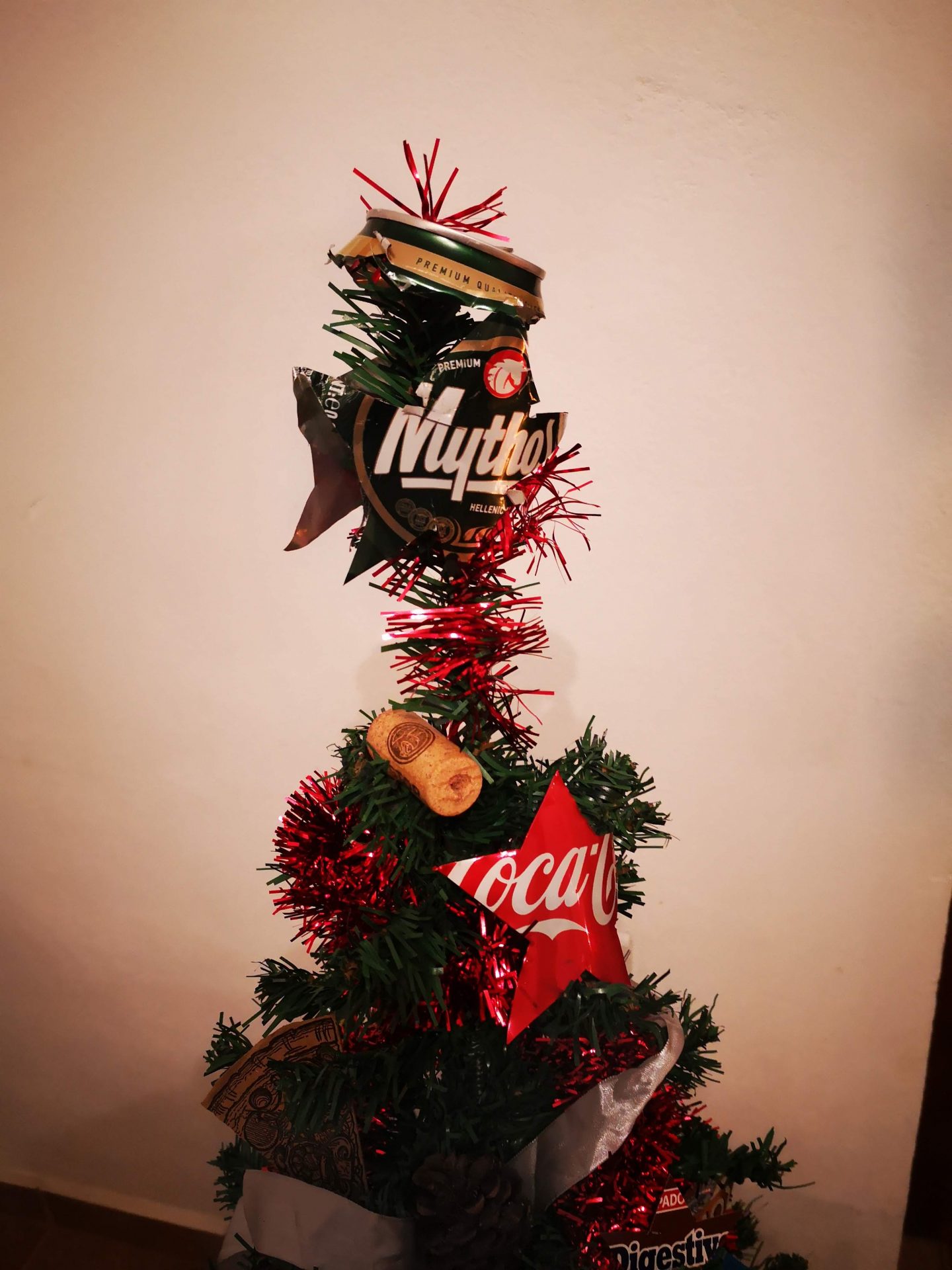
Tiny Christmas tree decorated with recycled materials.
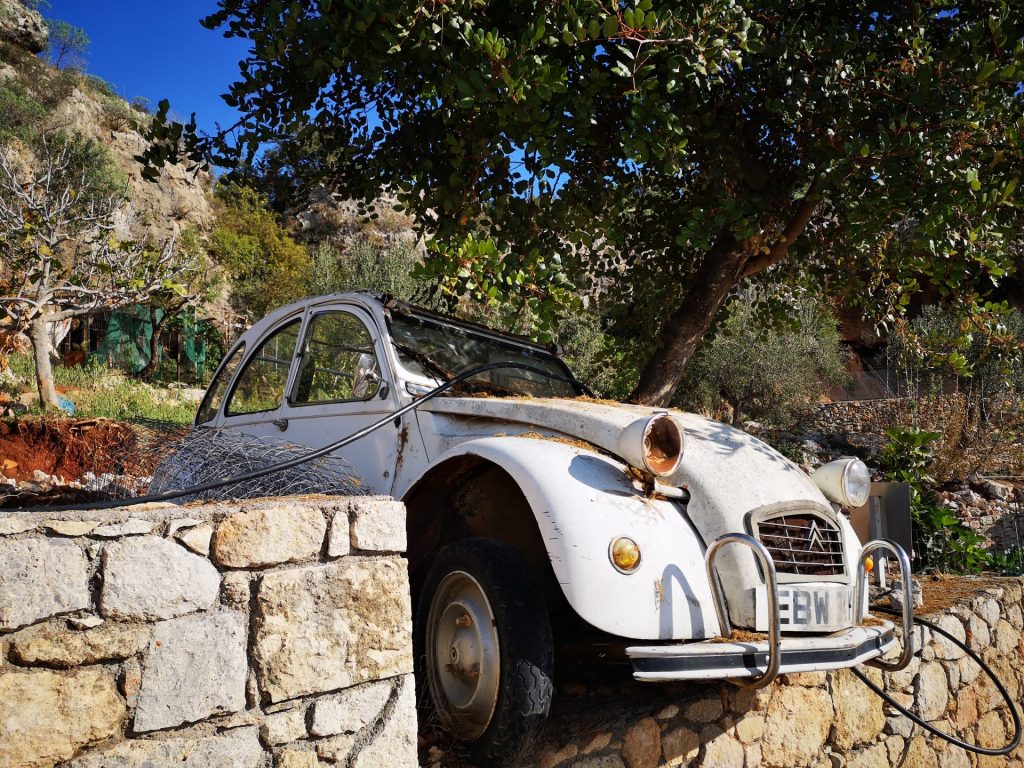


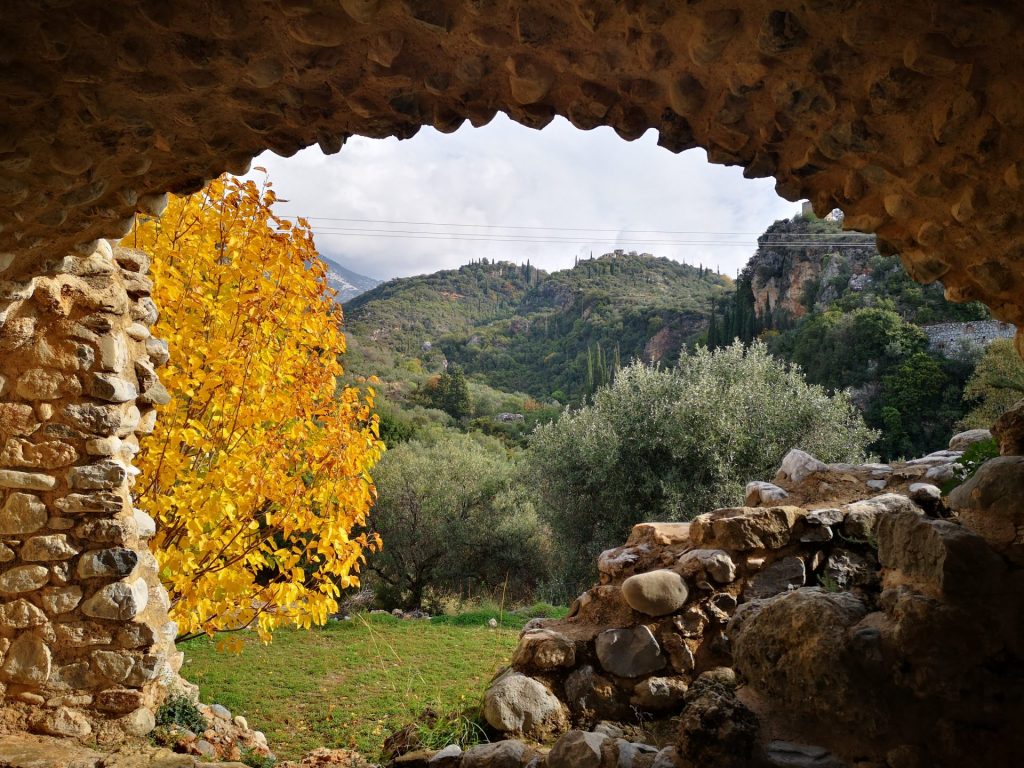
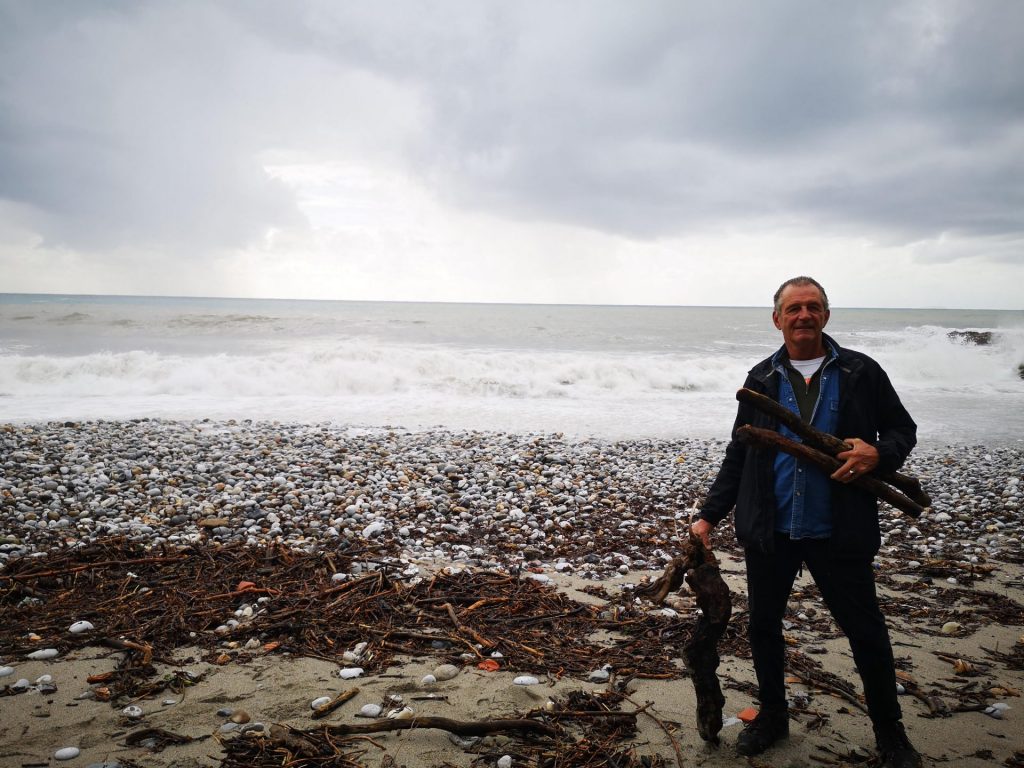

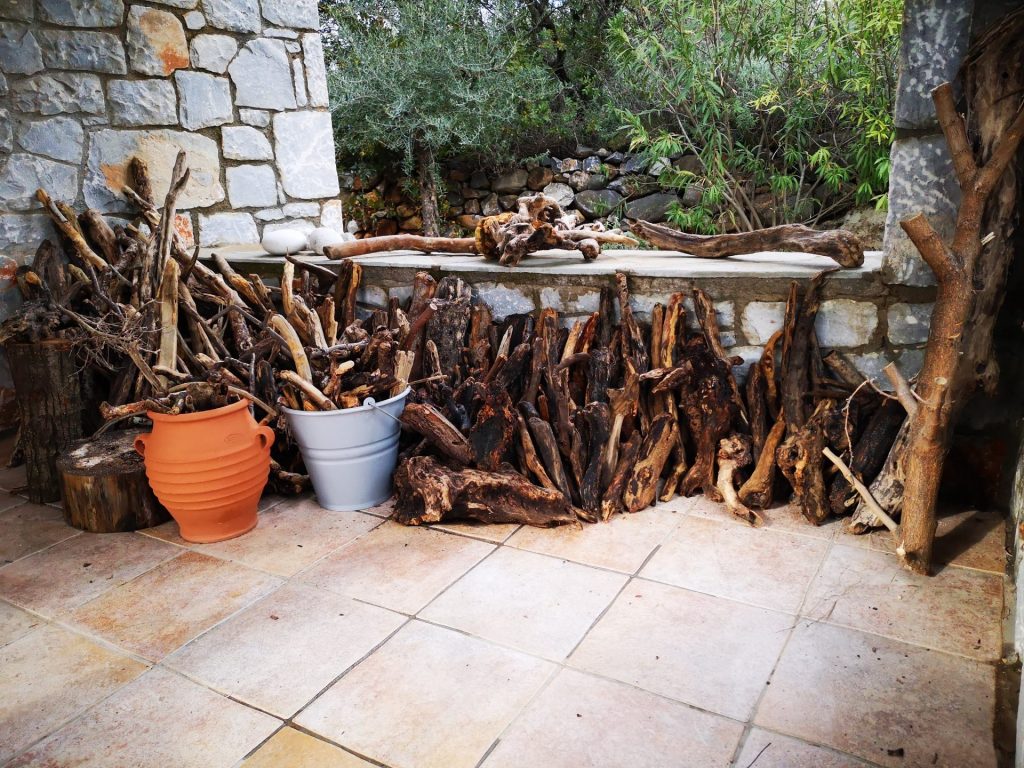
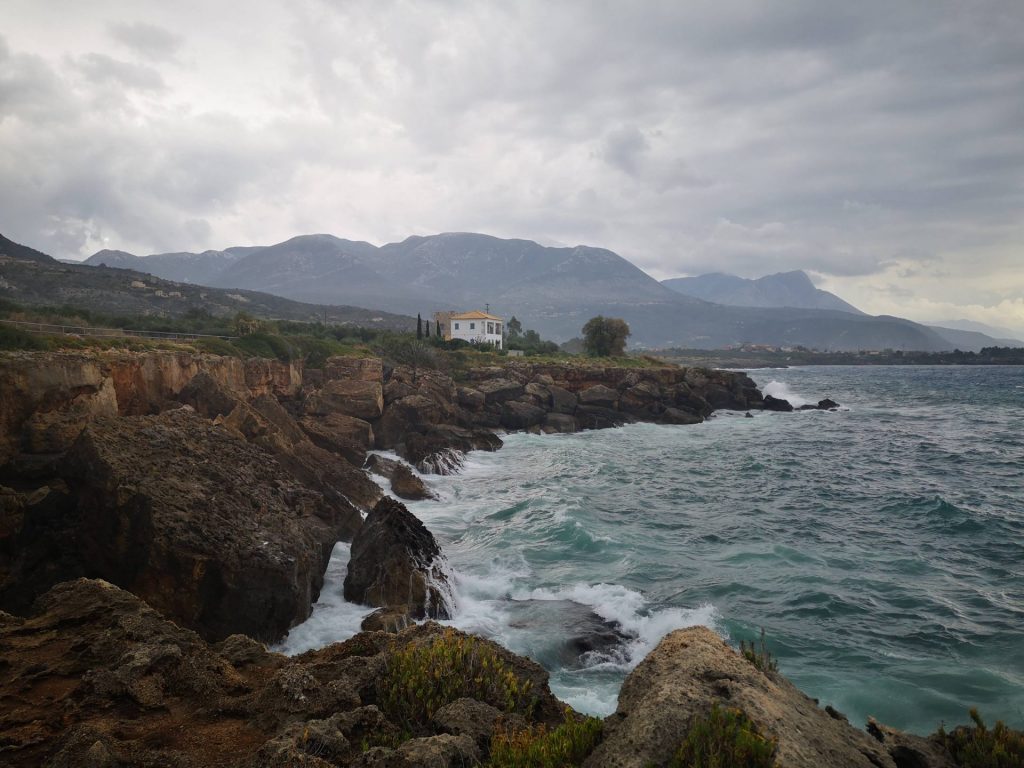
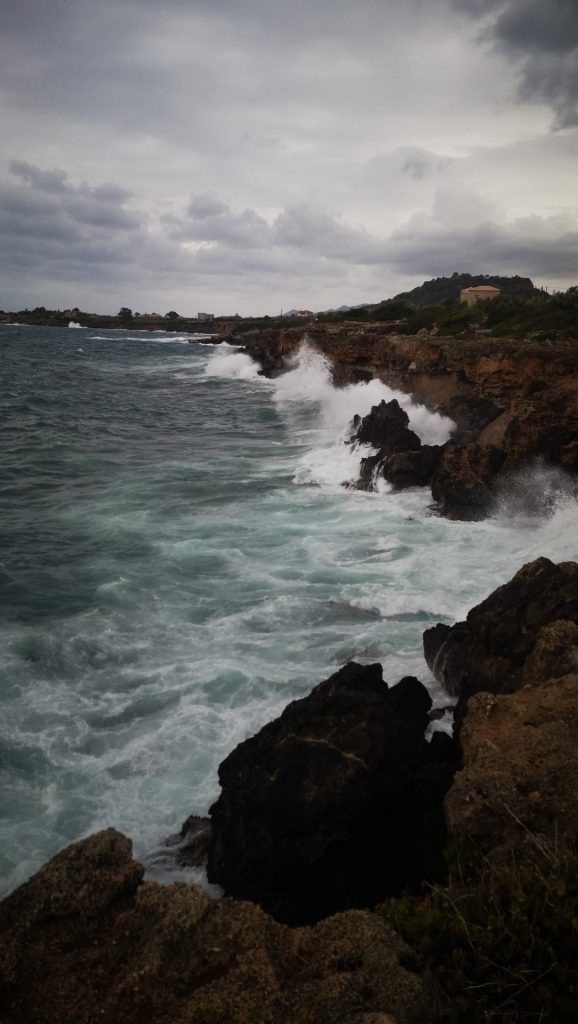

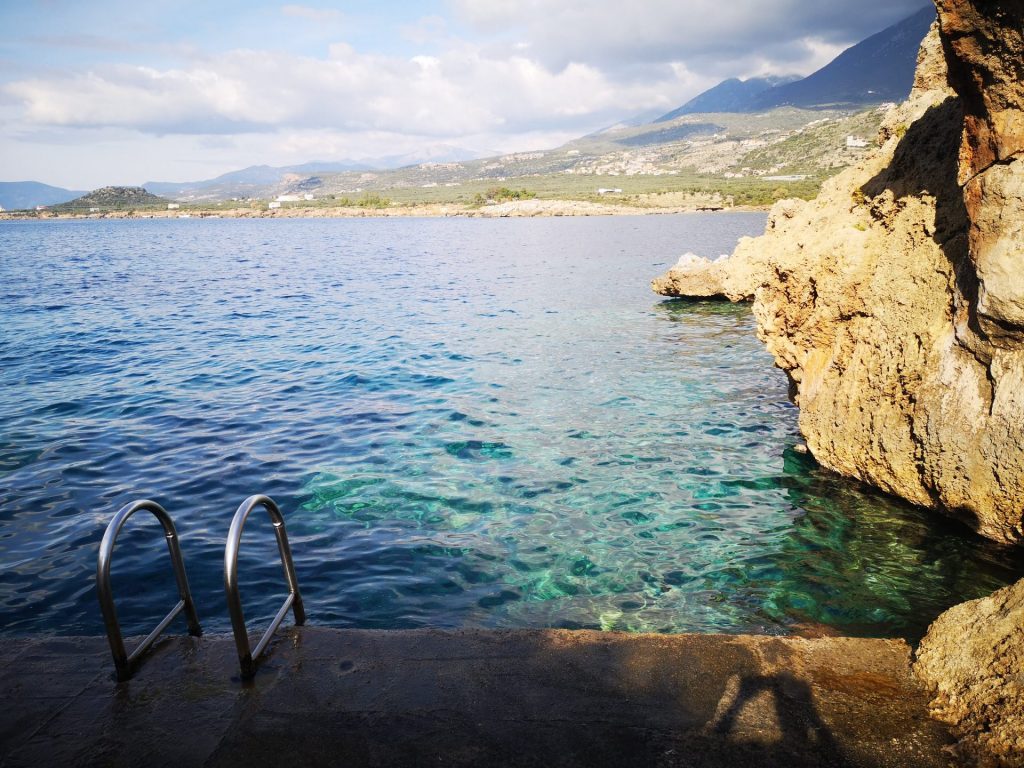

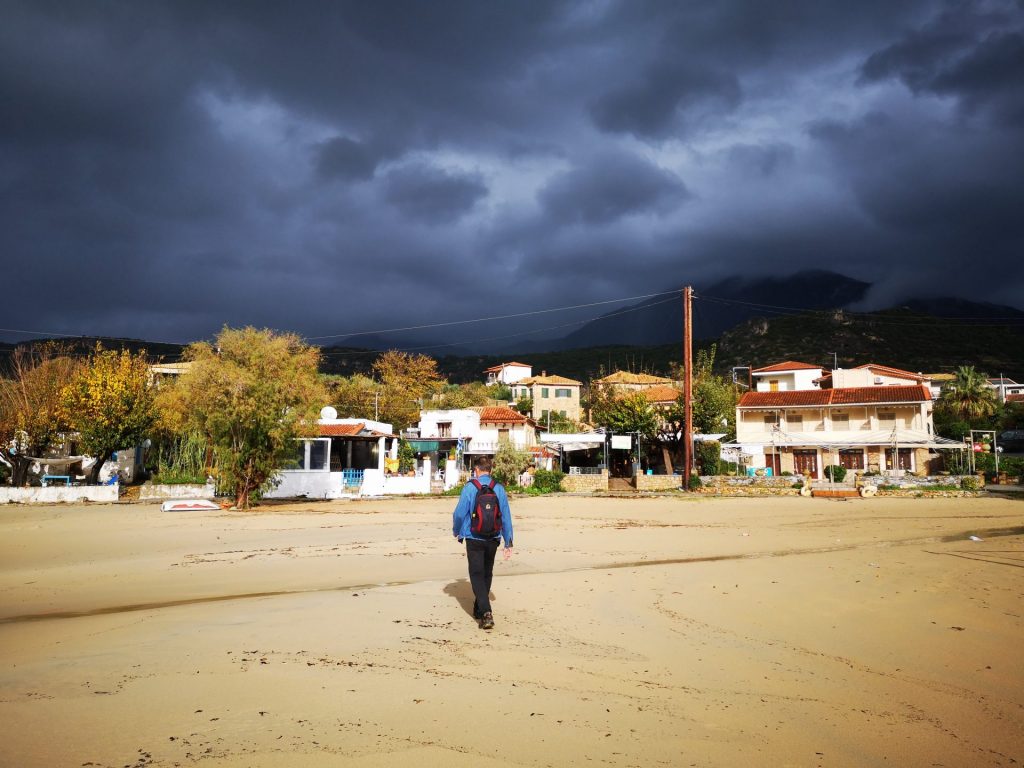
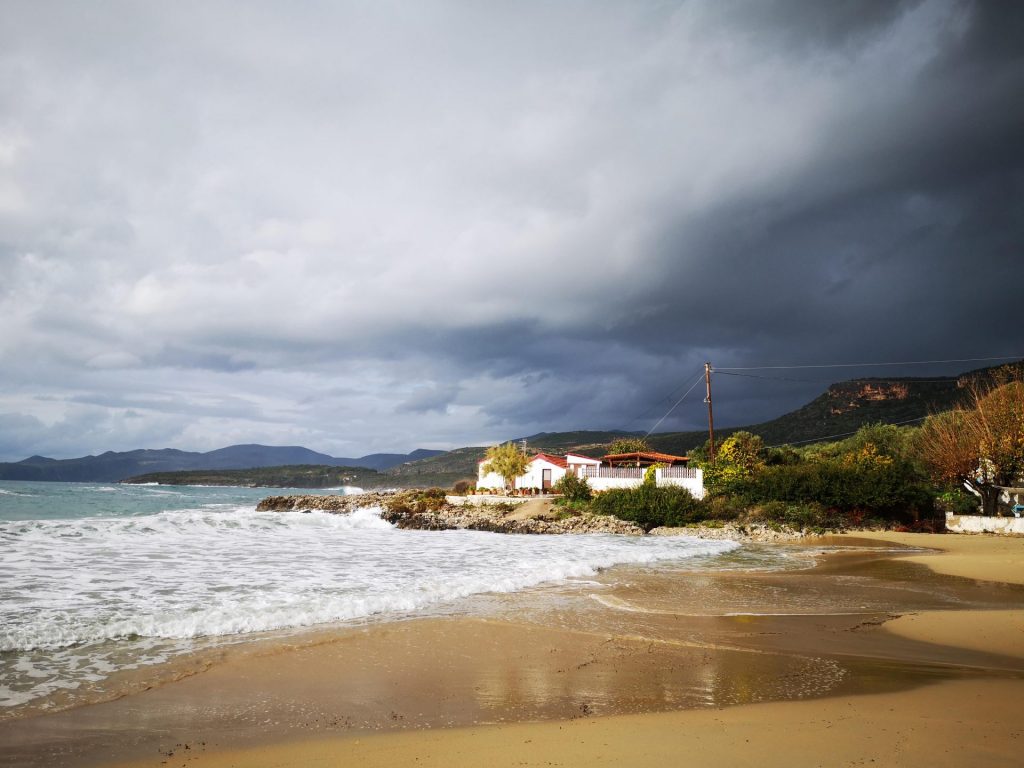
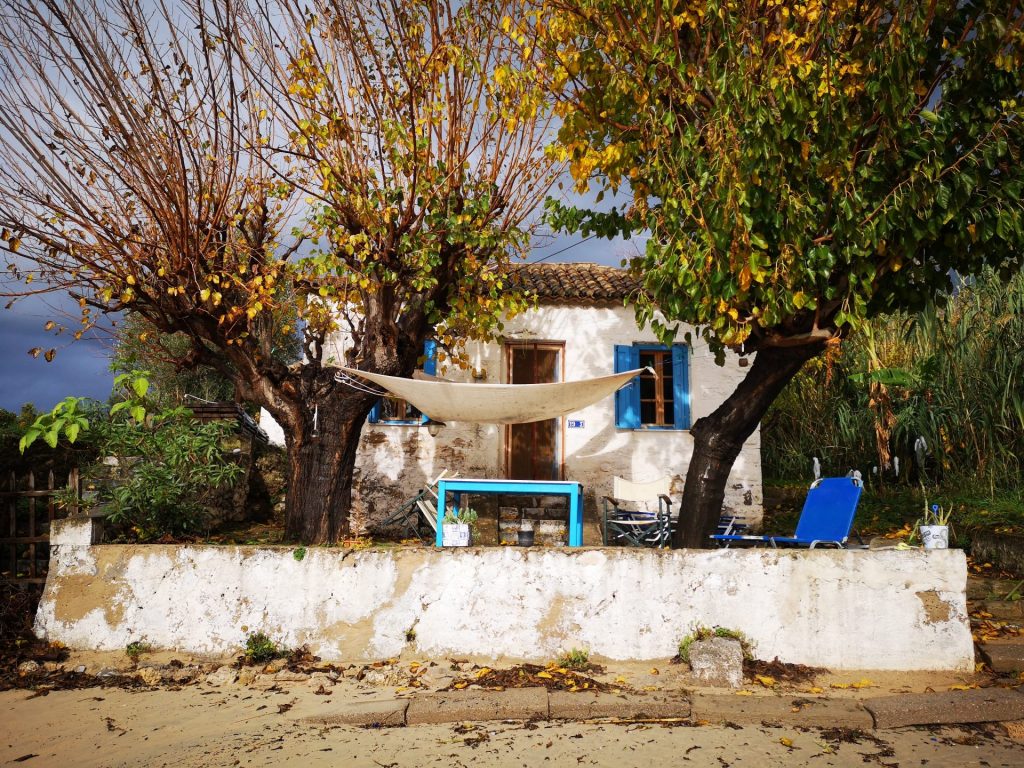

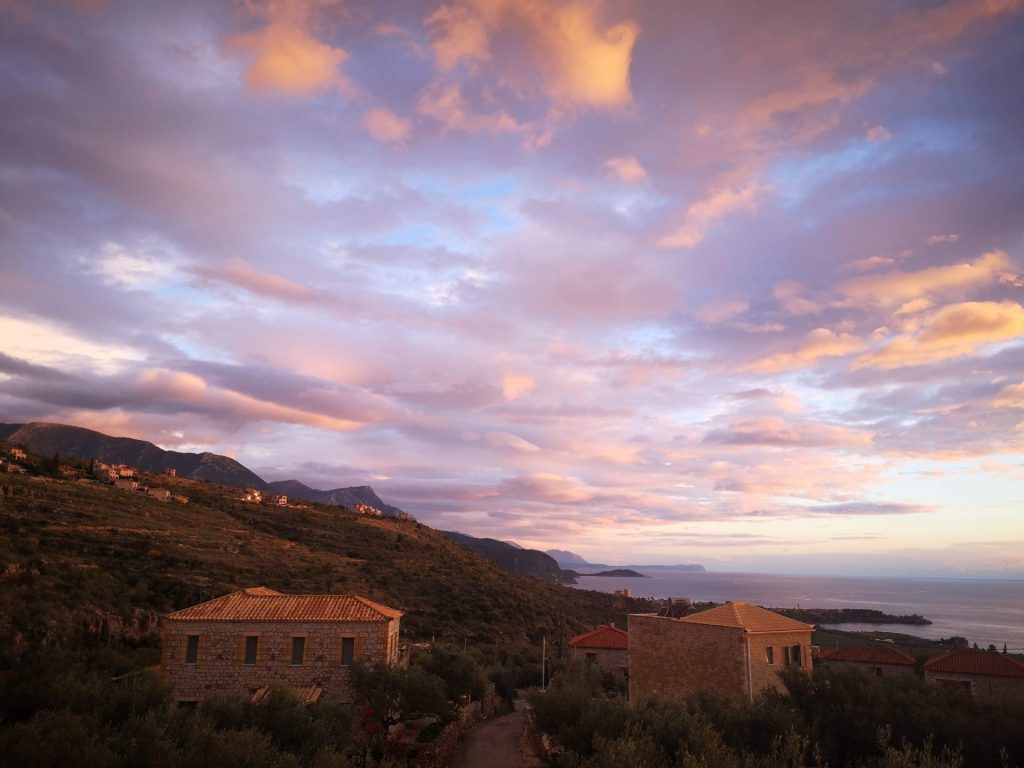
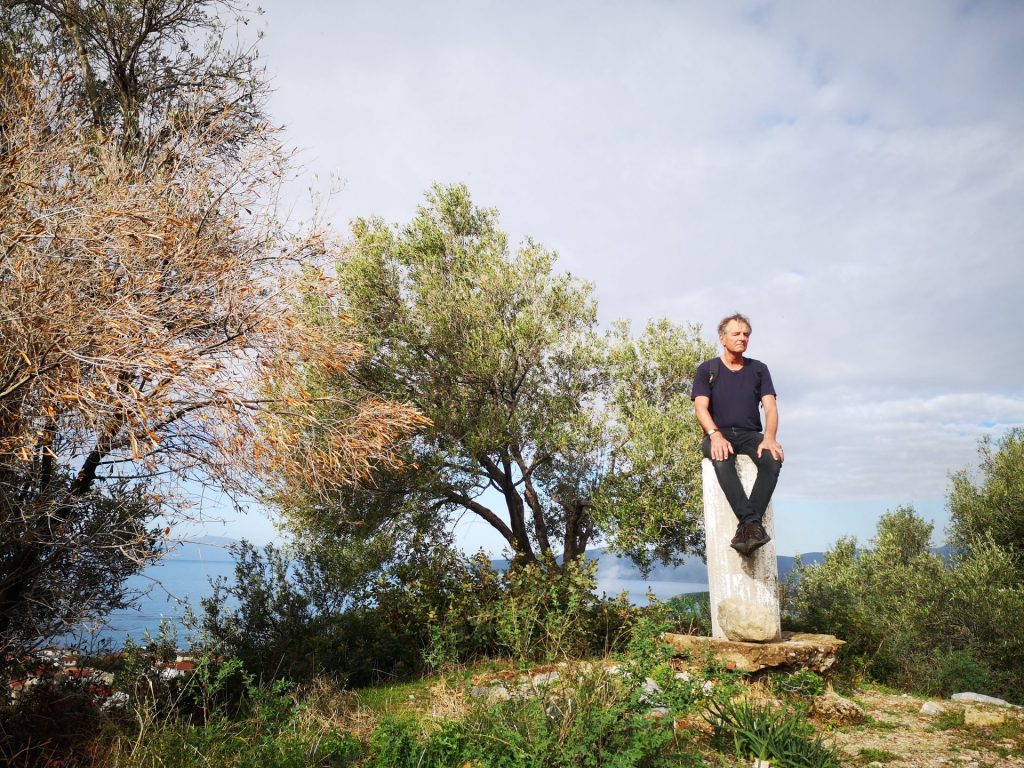



Good blog, beautiful photos, not sure I could have left that house and its surroundings! x
I really appreciate this post. I have been looking all over for this! Thank goodness I found it on Bing. You have made my day! Thank you again